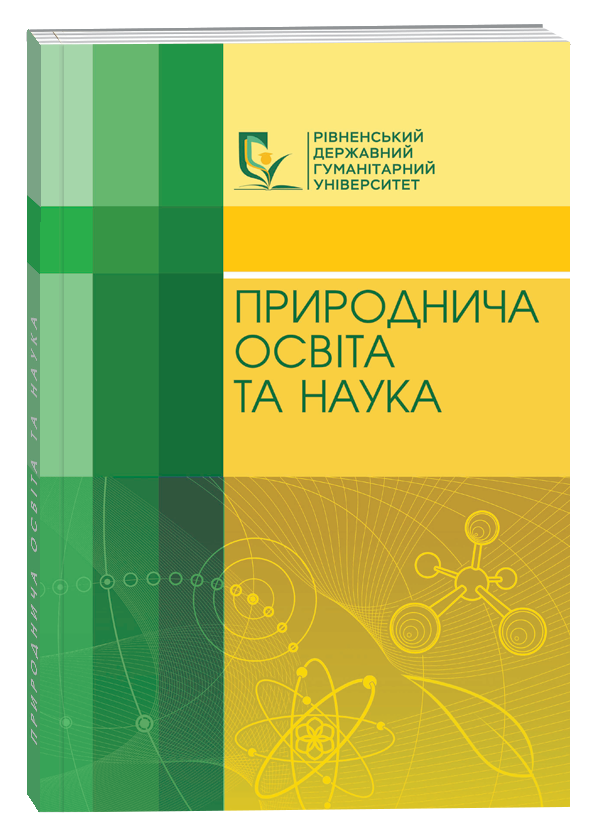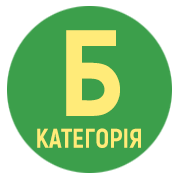DOMINANT AND SUBDOMINANT ROLE OF NATURAL RECREATION RESOURCES IN THE POTENTIAL OF UKRAINIAN ECOSYSTEMS
Abstract
It is stated that ecological-economic assessments of nature-resource potential (NRP) of ecosystems carried out within a unified methodology in cost indicators allow for juxtaposition and comparison of single components of said potential that covers mineral, water, land, forest, fauna and natural recreation resources. Determination of the role and the significance of these or those nature resources in ecosystems of Ukraine where they (resources) take leading positions in the NRP structure, that is, where they represent the first-significant (dominant) or second-significant (subdominant) resources within the total potential can be the guarantee of carefully weighed managerial decisions as to balanced nature use. Applicability of the above assessments is substantiated with respect to natural recreation resources proceeding from strategic goals of social-economic growth of Ukraine. It is established that, among 360 Ukrainian ecosystems of different hierarchical level, 21 ecosystems show that natural recreation resources are the first-significant (dominant) resources in the structure of total NRP, while the same are second-significant (subdominant) in 49 ecosystems, and third-significant type of nature resources in 152 ecosystems. It is the evidence of the defining or the essential role of natural recreation potential in substantiation of the perspectives of sustainable social-ecological-economic development of nature use in such ecosystems. The share of natural recreation resources as dominant NRP type manifests to be the least in the Slovchne-Ovruch Rayon of the Polissia Provincial Ecosystem (30,0%), while the biggest share is observed in the Bakhchysaray-Perovske Rayon of the Crimean Mountainous Provincial Ecosystem (58,7%). Six ecosystems are characterized by the dominant role of natural recreation resources that exceeds 45%. Here we speak of the South-Bank-Crimean (45,7%), Pre-Mountain-Crimean (45,9%) oblasts, Kachynsko-Almynskyy (46,2%), Vasylivsko-Old-Crimean (47,3%), Alushta-Sudak (56,7%), and the aforementioned Bakhchysaray-Perovske (58,7%) rayons, all of these ecosystems concentrated within the limits of the Crimean Mountains. Natural recreation resources whose role is subdominant in the total NRP of the ecosystem are combined into three groups as follows: the first covers natural rayons and oblasts where their share in the total NRP approximates to 20%, the second where the share varies from 20% to 30%, and the third with the share exceeding 30%. Among ecosystems of the third group we can not but point to the Zolochiv-Chuguiv Rayon (38,9%) of the East-Ukrainian Provincial Ecosystem, Mariupol-Novoazovsk (42,7%) Rayon, the Left-Bank-Dnieper-Pryazovskyy Rayon and the Illichivsko-Kominternivskyy (42,9%) rayon of the Prychornomorska Provincial Ecosystem. The high share of natural recreation resources in the NRPs of said ecosystems is largely connected with the provision of recreational demands of such big cities as Kharkiv, Mariupol and Odessa. It is stated that Ukrainian ecosystems with dominant and subdominant nature recreation resources require special attention and supportwith regard to subsequent full-scale development of balanced tourism-recreation nature use.
References
2. Голубець М.А., Марискевич О.Г., Крок Б.О., та ін. Екологічний потенціал наземних екосистем. Львів : Поллі, 2003. 180 с.
3. Гродзинський М.Д. Пізнання ландшафту: місце і простір: Монографія. У 2-х т. К. : Видавничо-поліграфічний центр «Київський університет», 2005. Т. 1. 431 с.
4. Гродзинський М.Д. Пізнання ландшафту: місце і простір: Монографія. У 2-х т. К. : Видавничо-поліграфічний центр «Київський університет», 2005. Т. 2. 503 с.
5. Олександр Маринич – видатний український географ. До 100-річчя від дня народження. Фізична географія та геоморфологія. 2020. 43(3). С. 7–10.
6. Петлін В.М. Синергетичні залежності в організації природних територіальних систем. Львів : Видавничий центр ЛНУ ім. Івана Франка, 2013. 396 с.
7. Grekousis G. Spatial Analysis Methods and Practice: Describe – Explore – Explain through GIS. Cambridge: University Press, 2020. 518 p.
8. Jhariya M.K., Meena R.S., Banerjee A. Ecological Intensification of Natural Resources for Sustainable Agriculture. 2021. 655 p.
9. Kinnaman T.C. A New Perspective on the Natural Resource Curse. World. 2023. 4 (4). 670 p.
10. Ludek K., Tomchikov I., Rakytova I. Development versus conservation: evaluation of landscape structure changes in Demanovska Valley. Slovakia. Journal of Mountain Science. 15. 2018. 1153 p.
11. Martina A.E., Collins S.J., Crowe S., Girard J., et al. Effects of formland heterogeneity on biodiversity are similar to – or even larger than – the effects of farming practices. Agriculture, Ecosystems and Enviroment, 2020. 28 p.
12. Rudenko S., Rudenko V. Nature-resource potential of natural regions of Ukraine in present-day figures. Екологічні науки: науково-практичний журнал. 2023. Вип. 6 (51). С. 84–89.
13. Samoilenko V., Bilous L., Havrylenko O., Dibrova I. Geoinformation model cause-effect analysis of anthropogenic impact in the Podilsko-Prydniprovskyi region. Geoinformatics. Publisher: European Association of Geoscientists & Engineers, 2021. Vol. 2021. 1 p.






